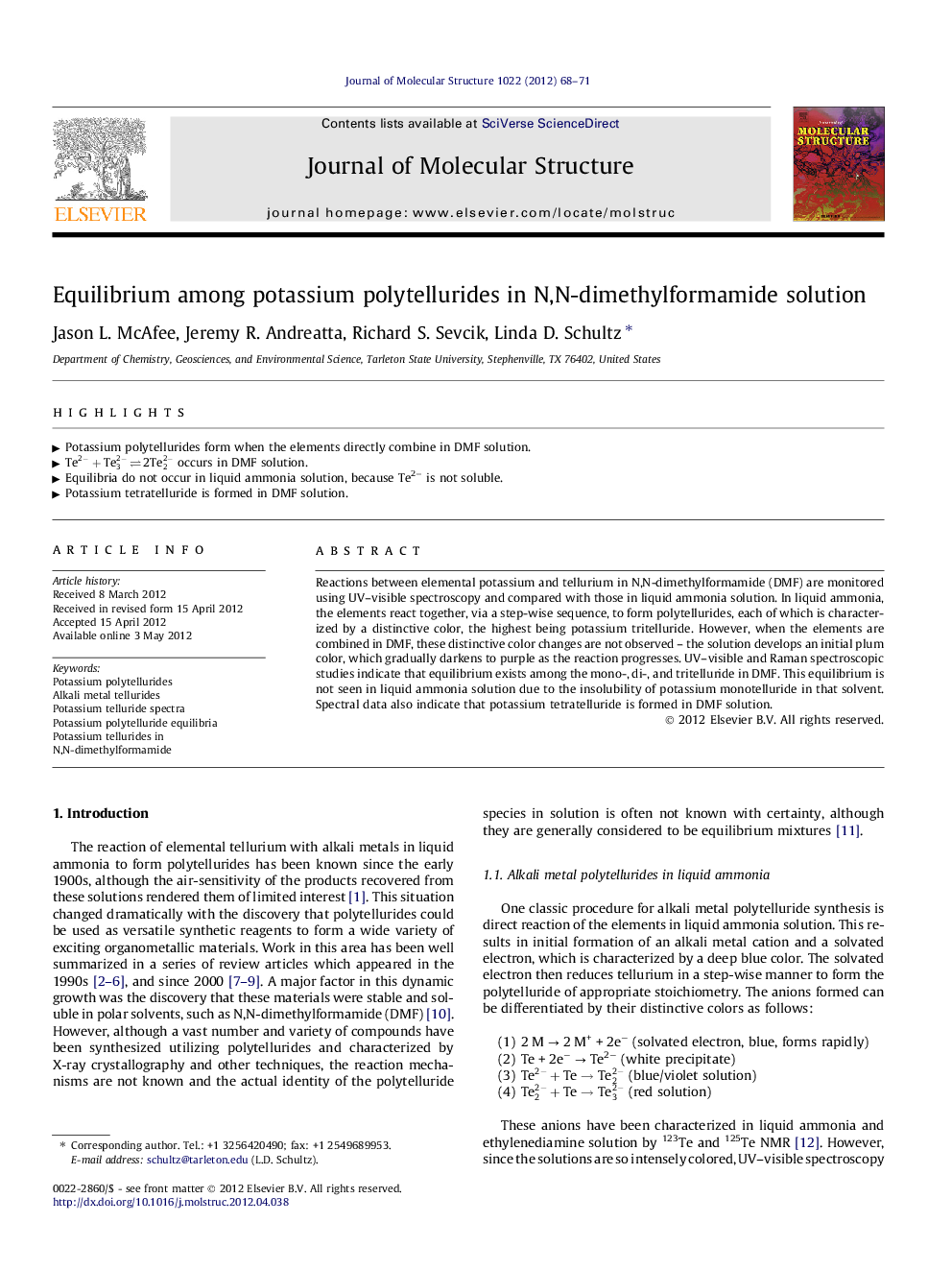| Article ID | Journal | Published Year | Pages | File Type |
|---|---|---|---|---|
| 1409532 | Journal of Molecular Structure | 2012 | 4 Pages |
Reactions between elemental potassium and tellurium in N,N-dimethylformamide (DMF) are monitored using UV–visible spectroscopy and compared with those in liquid ammonia solution. In liquid ammonia, the elements react together, via a step-wise sequence, to form polytellurides, each of which is characterized by a distinctive color, the highest being potassium tritelluride. However, when the elements are combined in DMF, these distinctive color changes are not observed – the solution develops an initial plum color, which gradually darkens to purple as the reaction progresses. UV–visible and Raman spectroscopic studies indicate that equilibrium exists among the mono-, di-, and tritelluride in DMF. This equilibrium is not seen in liquid ammonia solution due to the insolubility of potassium monotelluride in that solvent. Spectral data also indicate that potassium tetratelluride is formed in DMF solution.
► Potassium polytellurides form when the elements directly combine in DMF solution. ► Te2-+Te32-⇌2Te22- occurs in DMF solution. ► Equilibria do not occur in liquid ammonia solution, because Te2− is not soluble. ► Potassium tetratelluride is formed in DMF solution.
